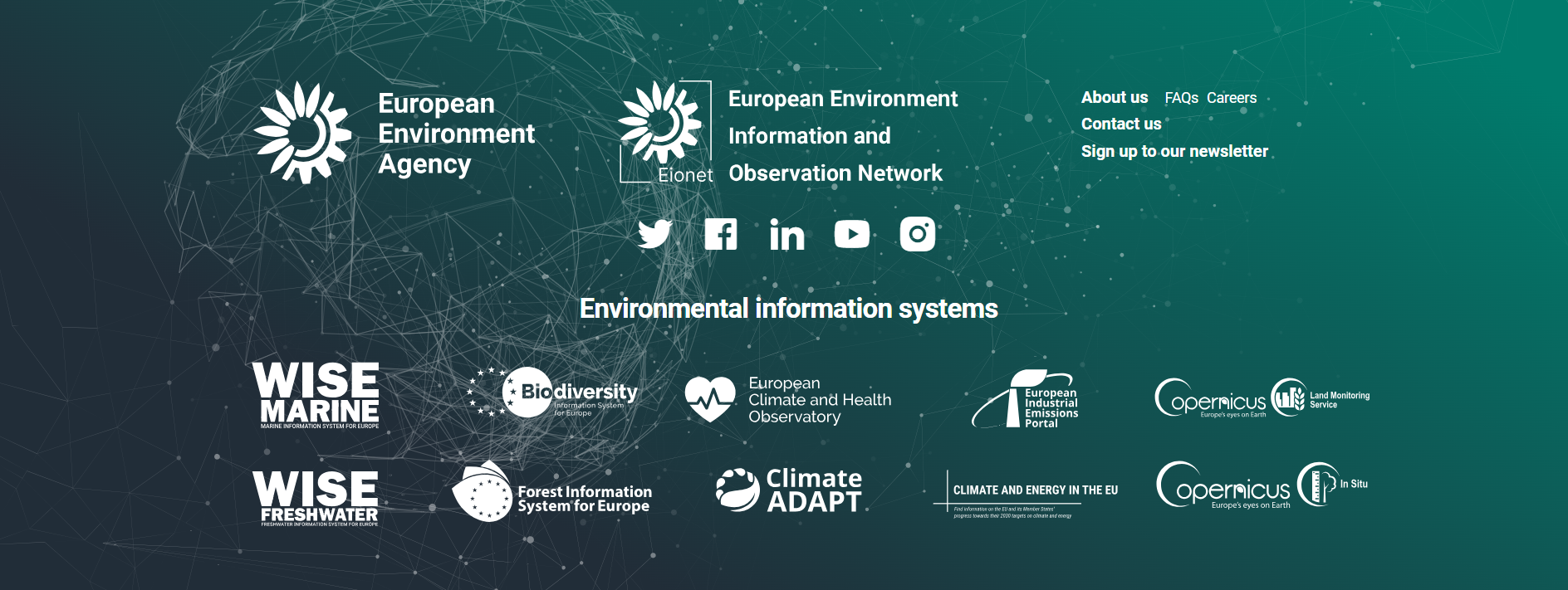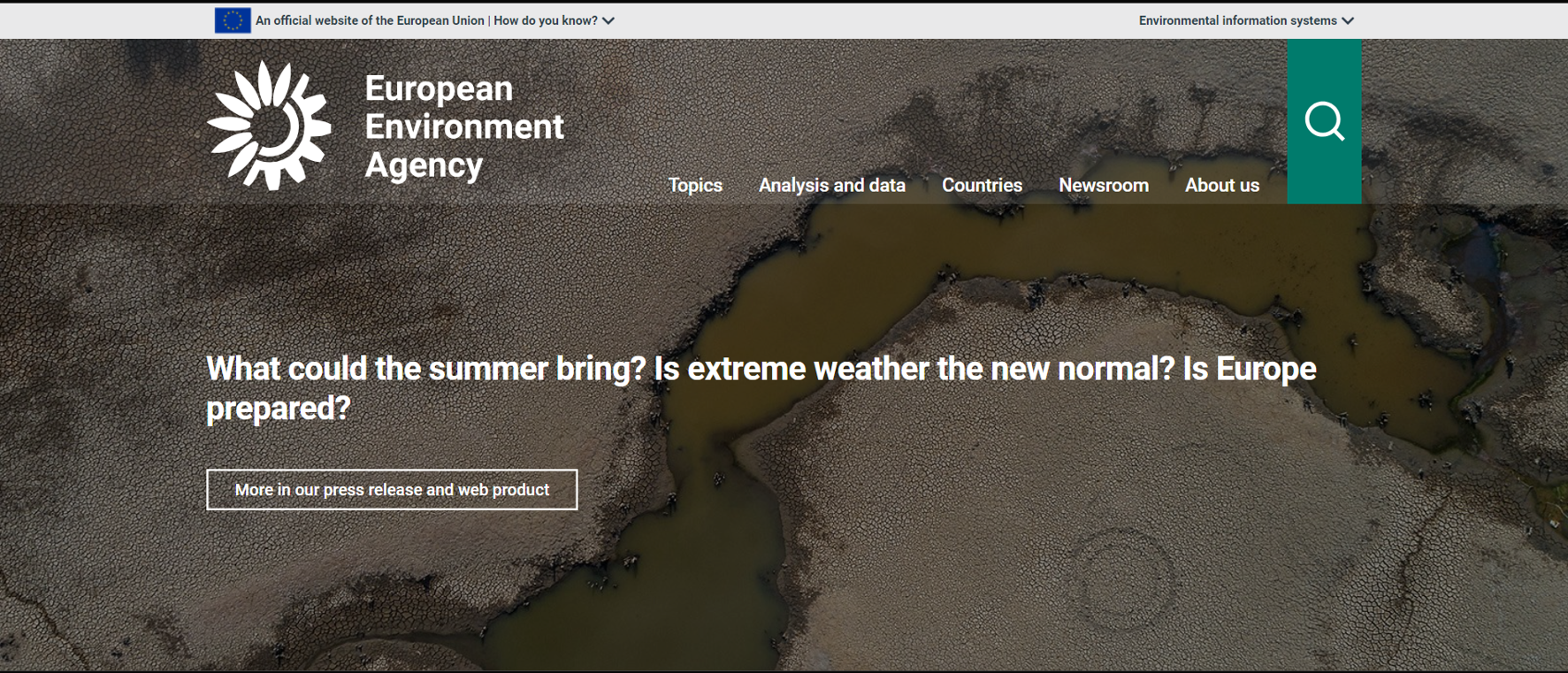European Environment Agency (EEA)
Description
The European Environment organization (EEA) is an organization established in 1994 under the auspices of the European Union. Its primary objective is to provide information and data to facilitate the achievement of Europe's environmental and climatic objectives. The primary objectives of the agency encompass the facilitation of policy formulation and critical global procedures, the provision of analytical proficiency, and the establishment and sustenance of a streamlined reporting framework for the exchange of national and worldwide data. The European Environment Agency (EEA) effectively disseminates information on the condition of Europe's environment, climate change, and broader sustainability concerns to both decision-makers and the general public through its partnership with Eionet, a network of collaborating partners.
The EEA engages in the collection and validation of data obtained from credible sources. This data is subsequently utilized to conduct analysis on various environmental and climate-related subjects, with the aim of generating policy-relevant insights and information. The platform functions as a significant information resource for those engaged in the processes of formulating, enacting, executing, and assessing environmental policies, as well as for the broader public.
The preceding analyses play a significant role in facilitating Europe's progression towards sustainability by providing assistance to policy development and implementation of practical solutions. The EEA collaborates with the European Commission in the implementation of environmental laws within the European Union (EU) Member States. Additionally, the EEA plays a crucial role in providing European citizens with information on the current condition and future prospects of Europe's environment.

Gallery

Classifications
Scale of implementation
The EEA is designed to be implemented at a pan-European scale. It provides data and resources for assessing environmental and energy potential across Europe, covering multiple countries and regions.
Type
The EEA is a web-based platform accessible through a web browser. It operates as an online tool and resource hub for renewable energy data and many other useful information.
Phase of solution
EEA information and data can be used anytime. It provides information and insights to inform decision-making and policy development. It supports users in evaluating the renewable energy potential of specific locations, identifying suitable technologies, and facilitating informed decision-making during the early stages of project development.
Target audience
EEA targets policymakers, government agencies, researchers, project developers, investors, and businesses engaged in renewable energy. It serves as a valuable resource, offering them data, tools, and resources for assessing renewable energy potential, formulating policies, planning projects, and making informed investment decisions.
Key features-functionality
The key features of the European Environment Agency (EEA) encompass its core functions, mission, and activities, which are vital for environmental management and policy development in Europe:
- Data Collection and Assessment: The EEA serves as a central hub for collecting, collating, and assessing environmental data from its member countries. It compiles comprehensive information on various aspects of the environment, such as air and water quality, biodiversity, climate change, and land use. This extensive data collection forms the foundation for evidence-based environmental policies.
- Environmental Reporting: The agency is responsible for producing high-quality environmental reports and assessments. It publishes regular reports on the state and trends of Europe's environment, providing policymakers, scientists, and the public with up-to-date and accurate information. These reports contribute to informed decision-making at regional, national, and European levels.
- Policy Support and Advice: EEA offers expert guidance and support to EU institutions and member states in the development and implementation of environmental policies. It conducts research, provides analysis, and offers recommendations to address emerging environmental challenges, aligning these with EU environmental goals and objectives.
- Environmental Indicators: The agency develops and maintains a robust set of environmental indicators, which serve as essential tools for tracking progress toward environmental objectives. These indicators help gauge the effectiveness of policies and provide early warning signs of environmental issues.
- Networking and Collaboration: EEA fosters collaboration among member countries, international organizations, and stakeholders. It promotes the exchange of knowledge and best practices in environmental management and policy implementation, enhancing Europe's collective efforts to protect the environment.
References & Sources for Further Reading
- European Environment Agency official site: https://www.eea.europa.eu
